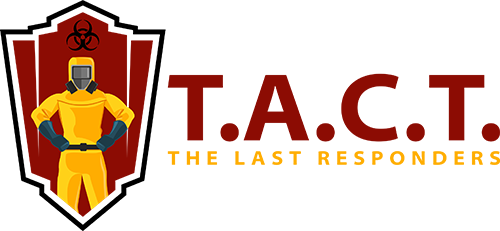What to Do After a Biohazard Incident: A Step-by-Step Guide for Homeowners
After a biohazard incident in the home, knowing the right steps is crucial to protect health, comply with laws, and restore safety. This step-by-step guide explains exactly how to deal with biohazard, the value of hiring a biohazard cleanup service, and what biohazard remediation means for homeowners.
A biohazard incident—such as a blood spill, unattended death, or infectious contamination—poses real risks to both residents and the environment. Exposure to bloodborne pathogens and toxic materials can cause serious illness if not managed correctly. Only detailed, regulated biohazard remediation eliminates these dangers, restoring your home to a safe condition.
Step 1: Secure and Isolate the Affected Area
Immediately after discovering a biohazard, prevent access to the scene. This reduces exposure risks for family and visitors, and preserves the area for any needed investigations. Use signs or tape to seal off the space and do not attempt initial cleaning.
Step 2: Notify Authorities When Required
For crime scenes, unattended deaths, or suspicious incidents, call emergency services or law enforcement first. They will determine when the area can be released for entry and further cleaning.
Step 3: Contact a Licensed Biohazard Cleanup Service
Never attempt biohazard cleanup yourself. Health dangers are serious, including risk of HIV, hepatitis, and bacterial infections. Professional biohazard remediation companies use specialized protective equipment, industrial-grade disinfectants, and proven protocols to remove all contamination safely.
- Certified teams employ OSHA-compliant methods
- Areas are tested before and after cleaning
- All waste is handled per EPA and local regulations
Step 4: Documentation and Assessment
Document the scene with photos or videos (if safe to do so) before cleanup begins. This evidence is vital for insurance claims, and helps assess the full scope of remediation.
Professional teams will:
- Assess all contaminated space, including flooring, walls, and furniture
- Use specialized tools (like ATP samplers) to identify invisible hazards
- Develop a step-by-step plan for complete restoration
Step 5: Safe Removal of Contaminated Materials
The cleanup crew removes all infected materials—such as blood-soaked carpet, drywall, and personal items—following strict disposal rules. These materials are sealed in biohazard bags, labeled, and taken to licensed waste facilities, never mixed with normal trash.
Step 6: Thorough Cleaning and Disinfection
Remediation teams use EPA-approved disinfectants and industrial equipment to clean surfaces, neutralize odors, and sanitize the air. Extra attention is given to cracks, porous surfaces, and HVAC systems. This ensures all pathogens and persistent odors are eliminated.
Step 7: Verification and Final Inspection
After decontamination, professionals test the area to confirm it is free of biohazard risk. This might include additional cleaning or repairs if contamination remains. Some companies provide a clearance certificate for your records or insurance.
Step 8: Restoration and Repairs
Final restoration restores the home to its original state—replacing drywall, flooring, or fixtures if demolition was necessary. Trusted biohazard cleanup service providers also handle minor reconstruction or recommend reliable contractors if needed.
Legal, Regulatory, and Compliance Considerations
Homeowners must comply with federal, state, and local regulations for safe biohazard remediation and disposal:
- OSHA standards regulate bloodborne pathogen exposure
- EPA rules govern waste handling and environmental impact
- Local laws may restrict DIY cleanup and require certified cleanup teams
- Violations may lead to fines or liability for injuries caused to others
- Retaining all cleanup documentation ensures compliance and helps prevent legal or insurance complications.
Insurance Considerations and Financial Support
Homeowner’s insurance often covers costs for professional biohazard remediation, especially when related to trauma, crime, or accidents. To start a claim:
- Notify your insurer as soon as possible
- Provide detailed documentation and invoices
- Ask your cleanup service if they assist with claims or paperwork
- T.A.C.T. can work directly with your insurance company and help handle all forms and communication, minimizing your stress
About T.A.C.T. Biohazard Cleanup Service
T.A.C.T. is a trusted leader in professional biohazard cleanup service and biohazard remediation. Our certified specialists follow all regulatory guidelines and provide rapid, compassionate support in your time of need. Whether dealing with suicide cleanup, infectious disease contamination, or accidental spills, T.A.C.T. restores your home’s safety—fast.
- Licensed and insured in full compliance with all local and federal regulations
- Discreet and respectful service by trained professionals
- 24/7 emergency response to minimize risk and disruption
- T.A.C.T. also supports insurance claims, provides all compliance paperwork, and ensures your property—and peace of mind—are fully restored.
Conclusion
Act fast, but act safely after a biohazard incident. Securing professional help is the only way to properly handle, remediate, and restore your home. Remember:
- Never attempt DIY cleanup due to severe health, legal, and financial risks
- Contact a licensed biohazard cleanup service like T.A.C.T. immediately for safe, thorough biohazard remediation
- Ask about insurance assistance and documentation help
For expert, compassionate support after any biohazard event, contact T.A.C.T. today. Protect your family, comply with the law, and restore your peace of mind—fast and professionally. Call or visit our website now for urgent biohazard cleanup service and a no-obligation consultation.

